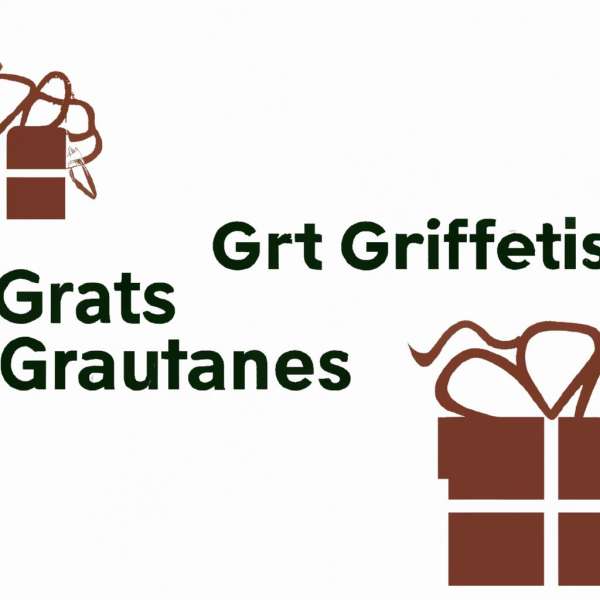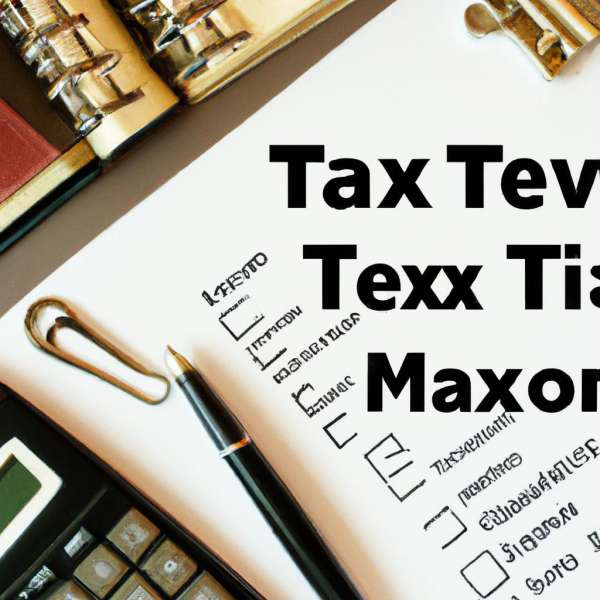Decoding GRATs and GRUTs: A Comprehensive Guide to Strategic Wealth Transfer
In the complex realm of wealth management and estate planning, certain instruments stand out as essential tools, guiding individuals and families through the intricate maze of tax regulations and financial strategies. Among these, Grantor Retained Annuity Trusts (GRATs) and Grantor Retained Unitrusts (GRUTs) are particularly noteworthy for their ability to facilitate efficient wealth transfer while minimizing tax liabilities. Despite their significant benefits, these trusts are often misunderstood, leaving many to navigate the landscape without a clear understanding. This guide aims to demystify GRATs and GRUTs by exploring their structures, advantages, and practical applications, empowering readers to make informed decisions about their estate planning strategies. Join us as we uncover how these innovative trusts can be valuable assets in achieving financial security and preserving legacies.

Understanding GRATs: Simplifying Gift-Granting Strategies
Grantor Retained Annuity Trusts (GRATs) and their counterpart, Grantor Retained Unitrusts (GRUTs), are powerful estate planning tools designed to optimize wealth transfer strategies and reduce estate taxes. These mechanisms enable individuals to transfer assets to beneficiaries while retaining some benefits from those assets during their lifetime. This balance is crucial for ensuring that the grantor maintains a degree of financial control while still achieving long-term philanthropic or familial goals.
A key feature of a GRAT is the fixed income stream it provides the grantor for a specified term. Once this term ends, the remaining assets in the trust pass to the beneficiaries, ideally free from gift tax. The success of a GRAT largely depends on the performance of the trust assets compared to a set IRS interest rate, known as the 7520 rate. If the assets outperform this rate, the excess appreciation benefits the beneficiaries without incurring significant tax liabilities.
Key characteristics include:
- Retained Income: Grantors retain income for a specified period.
- Transfer Tax Benefits: Effective for reducing taxable estate values.
- Flexibility: Ability to structure the trust according to individual needs.
Conversely, GRUTs allow for a predetermined percentage of the trust’s assets to be distributed to the grantor instead of a fixed dollar amount. This structure makes GRUTs more suitable for assets that may fluctuate in value, as the distributions can adjust based on the trust’s performance. Trusts like these can also help in managing liquidity needs without the immediate tax consequences that typically arise from transferring outright gifts. Let’s summarize some comparative aspects of GRATs and GRUTs in the table below:
| Aspect | GRATs | GRUTs |
|---|---|---|
| Income Distribution | Fixed annuity payment | Variable percentage of assets |
| Asset Growth Focus | Outperforming IRS rate | Fluctuating asset value |
| Tax Implications | Potentially lower gift tax impact | Adjusts with asset values |
Both GRATs and GRUTs serve as effective vehicles for wealth transfer, and the choice between the two largely depends on individual financial circumstances and objectives. By understanding the mechanics and advantages of each, grantors can strategically manage their estate planning in a manner that aligns with their financial goals and family legacy.

Exploring GRUTs: Flexible Income Streams for Savvy Investors
As investors seek innovative avenues for generating income, GRUTs (Grantor Retained Unit Trusts) emerge as a flexible tool worthy of exploration. Unlike traditional income streams, GRUTs allow individuals to retain an interest in a trust while effectively transferring the remainder to heirs or beneficiaries. This unique structure not only encourages financial growth but also offers potential tax advantages, making it an appealing choice for savvy investors looking to optimize their wealth management strategies.
Investors considering GRUTs should note several key features that distinguish them from other income-generating strategies:
- Variable Income Payments: GRUTs provide income based on a fixed percentage of the trust’s assets, which can vary with the trust’s performance.
- Asset Management Flexibility: The structure of GRUTs allows for adjustments based on asset value fluctuations, making them suitable for diverse investment portfolios.
- Tax Efficiency: GRUTs can offer significant tax benefits, particularly in managing estate and gift taxes.
both GRATs and GRUTs offer unique advantages for wealth transfer and estate planning. By understanding their distinct features and benefits, individuals can make informed decisions that align with their financial goals and legacy aspirations. Whether seeking fixed income streams or flexible asset management, these trusts provide valuable tools for strategic wealth management.
GRUTs allow the grantor to receive variable unit payments that adjust according to the trust’s performance, aligning income generation with market conditions.
For those interested in a deeper understanding, comparing the flexibility of GRUTs with GRATs (Grantor Retained Annuity Trusts) can provide valuable insights.
| Feature | GRUTs | GRATs |
|---|---|---|
| Income Structure | Variable unit withdrawals | Fixed annuity payments |
| Tax Treatment | Potentially lower tax rates | Tax efficiencies on asset appreciation |
| Flexibility | More adaptable based on trust performance | Less flexibility; fixed terms |
With their unique characteristics, GRUTs can serve as a versatile addition to an investor’s portfolio. By understanding how to utilize these trusts effectively, individuals can craft income streams that not only meet their current financial needs but also align with long-term wealth preservation goals.

Strategic Advantages of Utilizing GRATs and GRUTs in Estate Planning
Utilizing Grantor Retained Annuity Trusts (GRATs) and Grantor Retained Unitrusts (GRUTs) in estate planning offers a myriad of strategic advantages that can enhance wealth transfer while minimizing estate and gift taxes. These trusts are especially appealing to individuals with significant assets, as they allow for greater control and flexibility in managing one’s estate.
Key Benefits Include:
- Tax Efficiency: Both GRATs and GRUTs are designed to reduce the value of taxable estate, allowing individuals to transfer wealth to beneficiaries with minimal tax implications.
- Income Generation: GRATs provide fixed annuity payments while GRUTs offer variable payments based on the trust’s value, ensuring that grantors receive consistent income during their lifetimes.
- Asset Appreciation: By transferring appreciating assets into these trusts, any growth that occurs above the IRS’s assumed rate of return can escape estate taxes, significantly benefiting heirs.
| Aspect | GRATs | GRUTs |
|---|---|---|
| Payment Structure | Fixed Annuity | Variable Payments |
| Tax Benefits | Minimized Gift Tax | Reduced Estate Tax |
| Flexibility | Limited | Greater |
Moreover, these trusts can serve as a strategic tool for family dynamics, allowing grantors to retain control over assets while ensuring that their loved ones benefit from them. This can foster a sense of responsibility and financial literacy among heirs, as they become more engaged in understanding how wealth is managed and transferred. Consequently, GRATs and GRUTs not only facilitate effective financial planning but also contribute to a legacy of positive financial stewardship within families.

Essential Strategies and Best Practices for Enhancing Tax Efficiency
When delving into the complexities of Grantor Retained Annuity Trusts (GRATs) and Grantor Retained Unitrusts (GRUTs), it is crucial to consider several key factors to optimize tax efficiency. Both structures enable the grantor to maintain an income stream while transferring assets to beneficiaries, but they possess unique characteristics that can influence overall tax outcomes:
- Income Stream Analysis: Determine whether a fixed annuity or a variable unitrust payment better aligns with your financial objectives and cash flow requirements. Annuities offer consistent payments, whereas unitrust payments fluctuate based on asset value.
- Asset Selection: Select assets with high growth potential for both GRATs and GRUTs. Appreciating assets can reduce the grantor’s taxable estate, while low-yield assets may not maximize transfer benefits.
- Timing of Contributions: Time your contributions strategically to enhance the effectiveness of your chosen vehicle. Contributions made during favorable market conditions can significantly improve tax efficiency.
Adopting a proactive strategy can further enhance outcomes. Maintaining accurate actuarial calculations is essential, particularly concerning mortality assessments and IRS tables, which can directly impact the value transferred and tax liability:
| Consideration | GRAT Benefits | GRUT Benefits |
|---|---|---|
| Payment Structure | Fixed Payments | Variable Payments |
| Flexibility | Less Flexible | More Adaptable |
| Growth Potential | Significantly Enhance Value | Leverages Market Variability |
Ultimately, working with tax professionals and estate planners can shed light on the nuances of each option, ensuring your strategy aligns with personal financial goals while maximizing tax efficiency. As regulations evolve, staying informed and adaptable is vital in this ever-changing landscape.
Final Thoughts
As we wrap up our discussion on Grantor Retained Annuity Trusts (GRATs) and Grantor Retained Unitrusts (GRUTs), it is clear that these financial instruments offer more than just potential tax advantages; they represent strategic foresight in estate planning. Whether you aim to transfer wealth efficiently to your heirs or minimize tax liabilities, understanding the intricacies of GRATs and GRUTs empowers you to make informed decisions that align with your financial goals.
In a landscape of ever-changing regulations and economic conditions, staying informed about the tools at your disposal is crucial. Each option comes with its own set of benefits and potential drawbacks, making it essential to consider both your current situation and future aspirations. Consulting with financial and legal experts can further refine your strategy, ensuring that you leverage these trusts to their fullest potential.
Ultimately, whether you opt for the fixed payments of a GRAT or the variable distributions of a GRUT, the key lies in meticulous planning and personalized strategies. By incorporating these trusts into your estate planning toolkit, you can create a lasting legacy that reflects your values and financial objectives. Each decision shapes your family’s future—make it count.

Unlocking the Secrets of GRATs and GRUTs: Your Ultimate Guide
What Are GRATs and GRUTs?
GRATs (Grantor Retained Annuity Trusts) and GRUTs (Grantor Retained Unitrusts) are both estate planning vehicles designed to help grantors transfer wealth while minimizing gift and estate tax liabilities.
Key Differences Between GRATs and GRUTs
| Feature | GRAT | GRUT |
|---|---|---|
| Payment Structure | Fixed annuity | Percentage of trust value |
| Flexibility | Less flexible | More flexible |
| Suitability | Stable investments | Variable investments |
How Do GRATs Work?
With a GRAT, the grantor transfers assets into the trust and receives an annual annuity payment for a specified period. At the end of the term, any remaining assets are passed onto the beneficiaries, often free of additional estate tax.
Setting Up a GRAT
- Select assets to transfer into the GRAT.
- Determine the annuity payment structure.
- Specify the term of the trust.
- Transfer the assets into the GRAT.
Benefits of GRATs
- Minimizes gift tax.
- Takes advantage of appreciating assets.
- Reduces estate tax obligations.
How Do GRUTs Work?
In a GRUT, the grantor provides a fixed percentage of the trust’s assets as an annual payment. The value is calculated each year, making GRUTs suitable for investments with variable returns.
Setting Up a GRUT
- Select assets to transfer into the GRUT.
- Determine the payment percentage.
- Specify the term of the trust.
- Transfer the assets into the GRUT.
Benefits of GRUTs
- Flexibility with payments.
- Ideal for fluctuating asset values.
- Potentially higher asset growth passing to beneficiaries.
Case Studies
GRAT Case Study
Let’s consider John, a business owner who intends to pass significant wealth to his children. By setting up a 5-year GRAT with $1 million in stocks, John receives annual annuity payments. If the stock appreciates significantly, the remaining assets distributed to his children can avoid additional estate taxes.
GRUT Case Study
Susan, a real estate investor, chooses a GRUT for her properties. With a 5% annual payment rate, she benefits from significant flexibility to match the variable income from her investments. Upon the trust term’s end, her beneficiaries enjoy the remaining property assets with minimized tax implications.
First-Hand Experiences
Many individuals have leveraged GRATs and GRUTs to effectively manage their estates. Jane Doe, who set up a GRAT for her tech company shares, shared, “The GRAT allowed me to systematically transfer shares to my children without incurring exorbitant taxes. It was a smart move for securing their future.”
Practical Tips for Utilizing GRATs and GRUTs
- Consult with Experts: Work with estate planning professionals to optimize your trust strategy.
- Monitor the Market: Pay attention to market movements to maximize the benefits of your GRAT or GRUT.
- Adjust Investments: Reevaluate your asset portfolio regularly to ensure it aligns with your wealth transfer goals.
Common Pitfalls to Avoid
- Overestimating future growth projections for assets.
- Failure to comply with IRS regulations and requirements.
- Ignoring the importance of trust term specifications.
Secure Your Legacy with GRATs and GRUTs
Whether you choose a GRAT to benefit from predictable annuities or a GRUT for flexibility with asset payments, both trusts provide remarkable tools for estate planning. Start planning today to ensure a seamless wealth transfer to your beneficiaries.


